Milestones in EPA's Human Health Risk Assessment Research History
1971-EPA Establishes National Standards on Six Air Pollutants
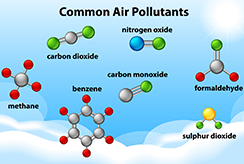 EPA announces national standards on six common pollutants: sulfur oxides, particulate matter, carbon monoxide, photochemical oxidants, nitrogen oxides and hydrocarbons. The scientific basis for these standards is based on Air Quality Criteria documents prepared for each of the pollutants.
EPA announces national standards on six common pollutants: sulfur oxides, particulate matter, carbon monoxide, photochemical oxidants, nitrogen oxides and hydrocarbons. The scientific basis for these standards is based on Air Quality Criteria documents prepared for each of the pollutants.
EPA Sets National Air Quality Standards
1985-EPA Creates the Integrated Risk Information System
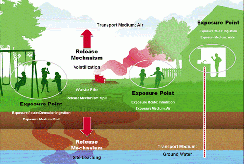 EPA creates the Integrated Risk Information System (IRIS) Program to foster consistency in the evaluation of chemical toxicity across the Agency and provide an internal database of human health assessments for chemicals found in the environment. The IRIS Program has fostered consistency in the evaluation of chemical toxicity across the Agency and become an important public resource as well. The IRIS Program has evolved to produce high-quality evidence-based assessments and increase opportunities for public input into the IRIS review process.
EPA creates the Integrated Risk Information System (IRIS) Program to foster consistency in the evaluation of chemical toxicity across the Agency and provide an internal database of human health assessments for chemicals found in the environment. The IRIS Program has fostered consistency in the evaluation of chemical toxicity across the Agency and become an important public resource as well. The IRIS Program has evolved to produce high-quality evidence-based assessments and increase opportunities for public input into the IRIS review process.
A History of the Integrated Risk Information System (IRIS)
Integrated Risk Information System
1988-EPA Makes the IRIS Database Public
 EPA makes the IRIS database available to the public, first by an email system and later by the National Library of Medicine's TOXNET system and the National Technical Information Service. The IRIS Program continues to evolve with the state of the science to produce high-quality evidence-based assessments and to provide an increasing number of opportunities for public input into the IRIS process.
EPA makes the IRIS database available to the public, first by an email system and later by the National Library of Medicine's TOXNET system and the National Technical Information Service. The IRIS Program continues to evolve with the state of the science to produce high-quality evidence-based assessments and to provide an increasing number of opportunities for public input into the IRIS process.
TOXNET
National Technical Information Service (NTIS)
1989 - EPA Publishes the First Exposure Factors Handbook
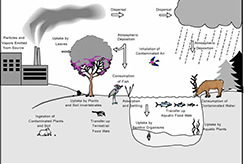 EPA publishes the first Exposure Factors Handbook that provides information on various physiological and behavioral factors commonly used in assessing exposure to environmental chemicals. EPA released the latest full edition of the Exposure Factors Handbook in 2011. Beginning in October 2017, EPA releases individual chapter updates. This allows risk assessors to get the latest information as new data becomes available.
EPA publishes the first Exposure Factors Handbook that provides information on various physiological and behavioral factors commonly used in assessing exposure to environmental chemicals. EPA released the latest full edition of the Exposure Factors Handbook in 2011. Beginning in October 2017, EPA releases individual chapter updates. This allows risk assessors to get the latest information as new data becomes available.
About the Exposure Factors Handbook
1989 - EPA Develops the Reference Concentration Method for Inhalation Exposure
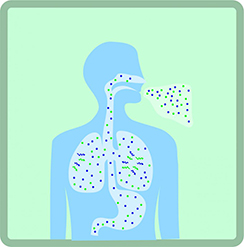 A reference concentration (RfC) is a non-cancer risk estimate for chronic inhalation exposure to environmental agents for use in chemical assessments. An RfC is an estimate, with uncertainty spanning perhaps an order of magnitude, of continuous exposure to an agent for humans, including sensitive subgroups, that is likely to be without significant risk of harmful effects during a lifetime. This document focuses on toxicological issues central to the development of an approach for the quantitative assessment of risks of health effects other than cancer and gene mutations for inhaled agents and to the development of an interim methodology for the estimation of RfCs, earlier known as inhalation reference dose.
A reference concentration (RfC) is a non-cancer risk estimate for chronic inhalation exposure to environmental agents for use in chemical assessments. An RfC is an estimate, with uncertainty spanning perhaps an order of magnitude, of continuous exposure to an agent for humans, including sensitive subgroups, that is likely to be without significant risk of harmful effects during a lifetime. This document focuses on toxicological issues central to the development of an approach for the quantitative assessment of risks of health effects other than cancer and gene mutations for inhaled agents and to the development of an interim methodology for the estimation of RfCs, earlier known as inhalation reference dose.
Interim Methods for Development of Inhalation Reference Concentrations
1993 - EPA Publishes Air Quality Criteria Document for Oxides of Nitrogen
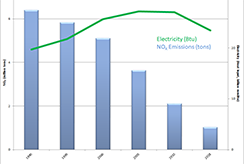 EPA's air quality criteria document for oxides of nitrogen (NOx) gives scientific support for revisions to the National Ambient Air Quality Standard for this category of air pollutants. This document focuses on a review and assessment of the effects on human health and welfare of nitric oxide and nitrogen dioxide. Although the emphasis is on presentation of health and welfare effects data, other scientific data are presented in order to provide a better understanding of NOx in the environment.
EPA's air quality criteria document for oxides of nitrogen (NOx) gives scientific support for revisions to the National Ambient Air Quality Standard for this category of air pollutants. This document focuses on a review and assessment of the effects on human health and welfare of nitric oxide and nitrogen dioxide. Although the emphasis is on presentation of health and welfare effects data, other scientific data are presented in order to provide a better understanding of NOx in the environment.
Air Quality Criteria for Oxides of Nitrogen (Final Report, 1993)
Reviewing National Ambient Air Quality Standards (NAAQS): Scientific and Technical Information
1994 - EPA Publishes Updated Methods for Assessing the Toxicity of Inhaled Chemicals
 EPA releases a report describing the Agency's methodology for estimating inhalation reference concentrations (RfCs) in quantitative dose-response assessment of chronic noncancer toxicity for individual inhaled chemicals. Noncancer toxicity refers to adverse health effects other than cancer and gene mutations. The report gives information to be considered in selecting key studies for RfC derivation, provides an overview of the respiratory system and its intra- and interspecies variables, and discusses areas of uncertainty and data gaps in relation to the proposed methodology. This report builds on Interim Methods for Development of Inhalation Reference Concentrations published in 1990.
EPA releases a report describing the Agency's methodology for estimating inhalation reference concentrations (RfCs) in quantitative dose-response assessment of chronic noncancer toxicity for individual inhaled chemicals. Noncancer toxicity refers to adverse health effects other than cancer and gene mutations. The report gives information to be considered in selecting key studies for RfC derivation, provides an overview of the respiratory system and its intra- and interspecies variables, and discusses areas of uncertainty and data gaps in relation to the proposed methodology. This report builds on Interim Methods for Development of Inhalation Reference Concentrations published in 1990.
1995 - EPA Releases Benchmark Dose Guidelines
 EPA publishes the initial guidelines on the use of the benchmark dose approach for assessing noncancer health risk. In 2000, EPA releases Benchmark Dose Software (BMDS) as a resource to help characterize the relationship between exposures to environmental pollutants or toxicants and observed adverse health outcomes. Researchers use the models in BMDS to estimate reference doses, reference concentrations, and slope factors. These are used along with other scientific information to set standards that protect human health from the effects of chemical exposures. Benchmark dose methods are now used worldwide for dose-response analysis to support chemical risk assessments and regulatory actions.
EPA publishes the initial guidelines on the use of the benchmark dose approach for assessing noncancer health risk. In 2000, EPA releases Benchmark Dose Software (BMDS) as a resource to help characterize the relationship between exposures to environmental pollutants or toxicants and observed adverse health outcomes. Researchers use the models in BMDS to estimate reference doses, reference concentrations, and slope factors. These are used along with other scientific information to set standards that protect human health from the effects of chemical exposures. Benchmark dose methods are now used worldwide for dose-response analysis to support chemical risk assessments and regulatory actions.
About Benchmark Dose Software (BMDS)
Benchmark Dose Software (BMDS) Release History (1995-2017)
1996 - EPA Publishes Air Quality Criteria Document for Particulate Matter and Ozone
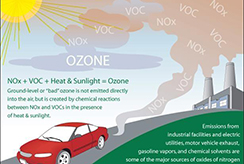 EPA publishes the air quality criteria document for particulate matter (PM) and ozone (O3), providing scientific support for updates to the National Ambient Air Quality Standards for these criteria air pollutants. The revised air quality criteria documents critically evaluate and assess the latest scientific data associated with exposure to the concentrations of PM, O3, and related photochemical oxidants found in ambient air. Emphasis is placed on the presentation of health and environmental effects data; however, other scientific data are presented and evaluated in order to provide a better understanding of the nature, sources, distribution, measurement, and concentrations of these pollutants in the environment.
EPA publishes the air quality criteria document for particulate matter (PM) and ozone (O3), providing scientific support for updates to the National Ambient Air Quality Standards for these criteria air pollutants. The revised air quality criteria documents critically evaluate and assess the latest scientific data associated with exposure to the concentrations of PM, O3, and related photochemical oxidants found in ambient air. Emphasis is placed on the presentation of health and environmental effects data; however, other scientific data are presented and evaluated in order to provide a better understanding of the nature, sources, distribution, measurement, and concentrations of these pollutants in the environment.
Air Quality Criteria for Particulate Matter (Final Report, 1996)
PM Air Quality Standards
Air Quality Criteria for Ozone and Related Photochemical Oxidants Volume I of III (Final Report, 1996)
Air Quality Criteria For Ozone And Related Photochemical Oxidants Volume II of III
Air Quality Criteria for Ozone and Related Photochemical Oxidants Volume III of III
O3 Air Quality Standards
1997 - EPA Publishes the Mercury Study Report to Congress
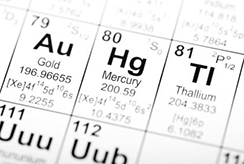 Mercury is an air toxic or hazardous air pollutant regulated by the EPA under the Clean Air Act. Mercury has been found to cause health effects at high levels. EPA's Mercury Study provides an assessment of the magnitude of U.S. mercury emissions by source, the health and environmental implications of those emissions, and the availability and cost of control technologies. As the state-of-the-science for mercury is continuously and rapidly evolving, this report is a snapshot of EPA's understanding of mercury in 1997.
Mercury is an air toxic or hazardous air pollutant regulated by the EPA under the Clean Air Act. Mercury has been found to cause health effects at high levels. EPA's Mercury Study provides an assessment of the magnitude of U.S. mercury emissions by source, the health and environmental implications of those emissions, and the availability and cost of control technologies. As the state-of-the-science for mercury is continuously and rapidly evolving, this report is a snapshot of EPA's understanding of mercury in 1997.
Mercury Study Report to Congress
Mercury and Air Toxics Standards
2004 - EPA Updates the Air Quality Criteria Document for Particulate Matter
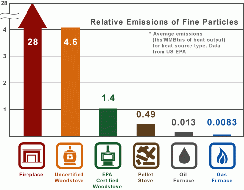 EPA publishes the air quality criteria document for particulate matter (PM), providing scientific support for revision to the National Ambient Air Quality Standard for this criteria air pollutant. The revised air quality criteria document critically evaluates and assess the latest scientific data associated with exposure to the concentrations of PM found in ambient air. Emphasis is placed on the presentation of health and environmental effects data; however, other scientific data are presented and evaluated in order to provide a better understanding of the nature, sources, distribution, measurement, and concentrations of PM in the environment.
EPA publishes the air quality criteria document for particulate matter (PM), providing scientific support for revision to the National Ambient Air Quality Standard for this criteria air pollutant. The revised air quality criteria document critically evaluates and assess the latest scientific data associated with exposure to the concentrations of PM found in ambient air. Emphasis is placed on the presentation of health and environmental effects data; however, other scientific data are presented and evaluated in order to provide a better understanding of the nature, sources, distribution, measurement, and concentrations of PM in the environment.
Air Quality Criteria for Particulate Matter (Final Report, 2004)
PM Air Quality Standards
2005 - EPA Updates the Guidelines for Cancer Risk Assessment
 EPA guidelines provide EPA staff with revised guidance for developing and using cancer risk assessments. They also provide the public with basic information about the Agency's risk assessment methods.
EPA guidelines provide EPA staff with revised guidance for developing and using cancer risk assessments. They also provide the public with basic information about the Agency's risk assessment methods.
Guidelines for Carcinogen Risk Assessment
2006 - EPA Publishes the Air Quality Criteria Document for Ozone
 EPA's air quality criteria document for ozone (O3) and related photochemical oxidants, provides scientific support for updates to the National Ambient Air Quality Standard for this criteria air pollutant. The document critically evaluates and assess the latest scientific data associated with exposure to the concentrations of O3 found in ambient air. Emphasis is placed on the presentation of health and environmental effects data; however, other scientific data are presented and evaluated in order to provide a better understanding of the nature, sources, distribution, measurement, and concentrations of O3 in the environment.
EPA's air quality criteria document for ozone (O3) and related photochemical oxidants, provides scientific support for updates to the National Ambient Air Quality Standard for this criteria air pollutant. The document critically evaluates and assess the latest scientific data associated with exposure to the concentrations of O3 found in ambient air. Emphasis is placed on the presentation of health and environmental effects data; however, other scientific data are presented and evaluated in order to provide a better understanding of the nature, sources, distribution, measurement, and concentrations of O3 in the environment.
Air Quality Criteria for Ozone and Related Photochemical Oxidants (Final Report, 2006)
O3 Air Quality Standards
2008 - EPA Replaces Air Quality Criteria Documents with Integrated Science Assessments
 EPA revises the process for evaluating the criteria air pollutants, replacing Air Quality Criteria Documents with Integrated Science Assessments.
EPA revises the process for evaluating the criteria air pollutants, replacing Air Quality Criteria Documents with Integrated Science Assessments.
Integrated Science Assessments (ISAs)
2009 - EPA Publishes the Integrated Science Assessment for Particulate Matter
 EPA's Integrated Science Assessment (ISA) for particulate matter (PM) provides a comprehensive review of the policy-relevant scientific literature published since the last National Ambient Air Quality Standard (NAAQS) review. This ISA provides scientific support for updates to the NAAQS for PM.
EPA's Integrated Science Assessment (ISA) for particulate matter (PM) provides a comprehensive review of the policy-relevant scientific literature published since the last National Ambient Air Quality Standard (NAAQS) review. This ISA provides scientific support for updates to the NAAQS for PM.
Integrated Science Assessment (ISA) For Particulate Matter (Final Report, Dec 2009)
PM Air Quality Standards
2009 - EPA Launches the Health and Environmental Research Online Database
 EPA's Health and Environmental Research Online (HERO) is a database of studies and other references used to develop EPA's risk assessments. HERO includes more than three million scientific references and associated data from the peer-reviewed literature used by EPA to develop reports that support critical agency decision-making for chemical regulation. With HERO, the public can access the scientific information and data that inform Agency decisions.
EPA's Health and Environmental Research Online (HERO) is a database of studies and other references used to develop EPA's risk assessments. HERO includes more than three million scientific references and associated data from the peer-reviewed literature used by EPA to develop reports that support critical agency decision-making for chemical regulation. With HERO, the public can access the scientific information and data that inform Agency decisions.
Health and Environmental Research Online (HERO)
2009 - EPA Studies Fate and Transport of Perfluorinated Chemical
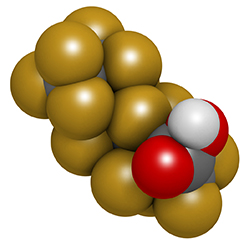 EPA's research demonstrates that fluorotelomer-based polymers degrade in soil to form perfluorooctanoic acid. This research provides scientific support for a Significant New Use Rule promulgated by EPA in 2012 under the Toxic Substances Control Act.
EPA's research demonstrates that fluorotelomer-based polymers degrade in soil to form perfluorooctanoic acid. This research provides scientific support for a Significant New Use Rule promulgated by EPA in 2012 under the Toxic Substances Control Act.
Characterizing Fate and Transport of Perfluorinated Chemical
2010 - EPA Publishes the Integrated Science Assessment for Carbon Monoxide
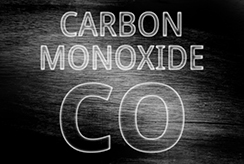 EPA's Integrated Science Assessment (ISA) for Carbon Monoxide (CO) provides a comprehensive review of the policy-relevant scientific literature published since the last National Ambient Air Quality Standard (NAAQS) review. This ISA provides scientific support for the decision to retain the NAAQS for CO.
EPA's Integrated Science Assessment (ISA) for Carbon Monoxide (CO) provides a comprehensive review of the policy-relevant scientific literature published since the last National Ambient Air Quality Standard (NAAQS) review. This ISA provides scientific support for the decision to retain the NAAQS for CO.
Integrated Science Assessment (ISA) for Carbon Monoxide
CO Air Quality Standards
2010 - EPA Publishes an Assessment of Exposure to Polybrominated Diphenyl Ethers
 EPA publishes a comprehensive assessment of exposure to polybrominated diphenyl ethers (PBDEs), a class of persistent organic pollutants, for people living in the United States. EPA has a PBDE workgroup comprised of scientists from several program offices to study production, use, alternatives, environmental fate, exposure, and health effects of the pollutant. This report addresses the exposure assessment needs identified by the PBDE Workgroup in 2006.
EPA publishes a comprehensive assessment of exposure to polybrominated diphenyl ethers (PBDEs), a class of persistent organic pollutants, for people living in the United States. EPA has a PBDE workgroup comprised of scientists from several program offices to study production, use, alternatives, environmental fate, exposure, and health effects of the pollutant. This report addresses the exposure assessment needs identified by the PBDE Workgroup in 2006.
An Exposure Assessment of Polybrominated Diphenyl Ethers (PBDE) (Final)
2012 - EPA Teams with Stakeholders to Implement Renovation-focused Health Impact Assessment
 EPA collaborates with stakeholders in Massachusetts to implement one of EPA's first Health Impact Assessments, and the first school renovation-focused Health Impact Assessment in this emerging field.
EPA collaborates with stakeholders in Massachusetts to implement one of EPA's first Health Impact Assessments, and the first school renovation-focused Health Impact Assessment in this emerging field.
Gerena School Health Impact Assessment (HIA) Final Report
Health Impact Assessments
2012 - EPA Publishes a Health Assessment for Dioxin
 EPA completes its highly-anticipated non-cancer health assessment for dioxin. EPA's final report describes the health effects other than cancer that may result from exposure to 2,3,7,8-tetrachlorodibenzo-p-dioxin (TCDD), the most potent dioxin compound. The assessment also establishes, for the first time, a non-cancer oral reference dose for TCDD.
EPA completes its highly-anticipated non-cancer health assessment for dioxin. EPA's final report describes the health effects other than cancer that may result from exposure to 2,3,7,8-tetrachlorodibenzo-p-dioxin (TCDD), the most potent dioxin compound. The assessment also establishes, for the first time, a non-cancer oral reference dose for TCDD.
2013 - EPA Publishes the Integrated Science Assessment of Ozone and Related Photochemical Oxidants
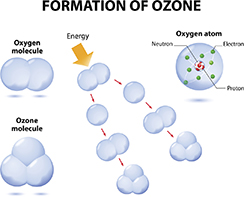 EPA's Integrated Science Assessment (ISA) of ozone (O3) and related photochemical oxidants provides a comprehensive review of the policy-relevant scientific literature published since the last National Ambient Air Quality Standard (NAAQS) review. This ISA provides scientific support for the decision to update the NAAQS for O3 and related photochemical oxidants.
EPA's Integrated Science Assessment (ISA) of ozone (O3) and related photochemical oxidants provides a comprehensive review of the policy-relevant scientific literature published since the last National Ambient Air Quality Standard (NAAQS) review. This ISA provides scientific support for the decision to update the NAAQS for O3 and related photochemical oxidants.
Integrated Science Assessment (ISA) of Ozone and Related Photochemical Oxidants (Final Report, Feb 2013)
O3 Air Quality Standards
2013 - EPA Releases the Exposure Toolbox
 EPA develops the Exposure Toolbox to provide a comprehensive resource for those conducting exposure assessments. The EPA Exposure Toolbox is a compendium of exposure assessment tools that links to guidance documents, databases, models, reference materials, and other related resources.
EPA develops the Exposure Toolbox to provide a comprehensive resource for those conducting exposure assessments. The EPA Exposure Toolbox is a compendium of exposure assessment tools that links to guidance documents, databases, models, reference materials, and other related resources.
EPA ExpoBox (A Toolbox for Exposure Assessors)
2014 - EPA Publishes IRIS Assessment of Chronic Inhalation Exposure to Asbestos in Libby, Montana
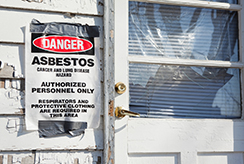 EPA publishes the Integrated Risk Information System (IRIS) assessment of Libby Amphibole asbestos, a specific type of asbestos found as a consequence of the mining and processing of vermiculite in Libby. Asbestos is a mineral fiber that is found in rocks and soil. Exposure can increase the risk of developing lung disease, including cancer. The toxicological review provides scientific support and rationale for the hazard and dose-response assessment in IRIS pertaining to chronic inhalation exposure to Libby Amphibole asbestos. The assessment supports the Agency clean-up and related risk management initiatives at the Libby Superfund site.
EPA publishes the Integrated Risk Information System (IRIS) assessment of Libby Amphibole asbestos, a specific type of asbestos found as a consequence of the mining and processing of vermiculite in Libby. Asbestos is a mineral fiber that is found in rocks and soil. Exposure can increase the risk of developing lung disease, including cancer. The toxicological review provides scientific support and rationale for the hazard and dose-response assessment in IRIS pertaining to chronic inhalation exposure to Libby Amphibole asbestos. The assessment supports the Agency clean-up and related risk management initiatives at the Libby Superfund site.
IRIS Toxicological Review of Libby Amphibole Asbestos (Final Report)
Video: Pride and Perseverance: Community Engagement and EPA Cleanup of the Libby Asbestos Superfund Site
2016 - EPA Co-Authors a Report on the Impacts of Climate Change on Human Health
 EPA co-authors an assessment that synthesizes climate change impacts on human health with seven other federal agencies, involving 100 experts. The report advances scientific understanding of the impacts of climate change on public health and highlights social and environmental disparities that make some communities particularly vulnerable to climate change. This assessment strengthens and expands understanding of climate-related health impacts by providing a more definitive description of climate-related health burdens in the United States. It builds on the 2014 National Climate Assessment and reviews and synthesizes key contributions to the published literature.
EPA co-authors an assessment that synthesizes climate change impacts on human health with seven other federal agencies, involving 100 experts. The report advances scientific understanding of the impacts of climate change on public health and highlights social and environmental disparities that make some communities particularly vulnerable to climate change. This assessment strengthens and expands understanding of climate-related health impacts by providing a more definitive description of climate-related health burdens in the United States. It builds on the 2014 National Climate Assessment and reviews and synthesizes key contributions to the published literature.
The Impacts of Climate Change on Human Health in the United States: A Scientific Assessment
2016 - EPA Publishes the Integrated Science Assessment for Oxides of Nitrogen-Health Criteria
 EPA's Health Criteria Integrated Science Assessment (ISA) for Oxides of Nitrogen (NOx) is part of the Agency’s periodic review of the primary (health-based) National Ambient Air Quality Standard (NAAQS) for NOx. It provides a comprehensive review of the policy-relevant scientific literature published since the last NAAQS review. Overall, findings integrated from previous and recent studies strengthen the conclusions from the previous NAAQS review completed in 2010. An update to the 2008 ecological criteria assessment is currently under development.
EPA's Health Criteria Integrated Science Assessment (ISA) for Oxides of Nitrogen (NOx) is part of the Agency’s periodic review of the primary (health-based) National Ambient Air Quality Standard (NAAQS) for NOx. It provides a comprehensive review of the policy-relevant scientific literature published since the last NAAQS review. Overall, findings integrated from previous and recent studies strengthen the conclusions from the previous NAAQS review completed in 2010. An update to the 2008 ecological criteria assessment is currently under development.
Integrated Science Assessment (ISA) for Nitrogen Dioxide - Health Criteria
Integrated Science Assessment (ISA) for Oxides of Nitrogen, Oxides of Sulfur, and Particulate Matter (Ecological Criteria)
Reviewing National Ambient Air Quality Standards (NAAQS): Scientific and Technical Information
2017 - EPA Publishes the Integrated Science Assessment for Sulfur Oxides-Health Criteria
 EPA's Health Criteria Integrated Science Assessment (ISA) for Sulfur Oxides (SOx) is part of the Agency’s periodic review of the primary (health-based) National Ambient Air Quality Standard (NAAQS) for SOx. It provides a comprehensive review of the policy-relevant scientific literature published since the last NAAQS review. Overall, findings from recent studies strengthen the conclusions from the previous NAAQS review completed in 2010. An update to the 2008 ecological criteria assessment is currently under development.
EPA's Health Criteria Integrated Science Assessment (ISA) for Sulfur Oxides (SOx) is part of the Agency’s periodic review of the primary (health-based) National Ambient Air Quality Standard (NAAQS) for SOx. It provides a comprehensive review of the policy-relevant scientific literature published since the last NAAQS review. Overall, findings from recent studies strengthen the conclusions from the previous NAAQS review completed in 2010. An update to the 2008 ecological criteria assessment is currently under development.
Integrated Science Assessment for Sulfur Oxides - Health Criteria
Integrated Science Assessment (ISA) for Oxides of Nitrogen, Oxides of Sulfur, and Particulate Matter (Ecological Criteria)
Reviewing National Ambient Air Quality Standards (NAAQS): Scientific and Technical Information
